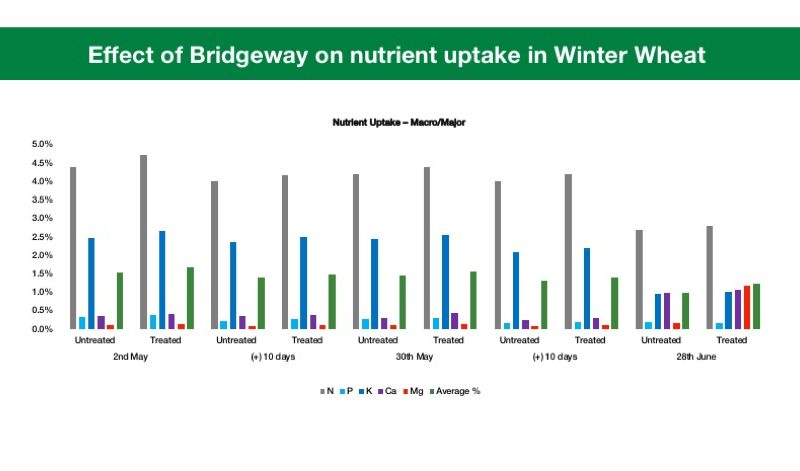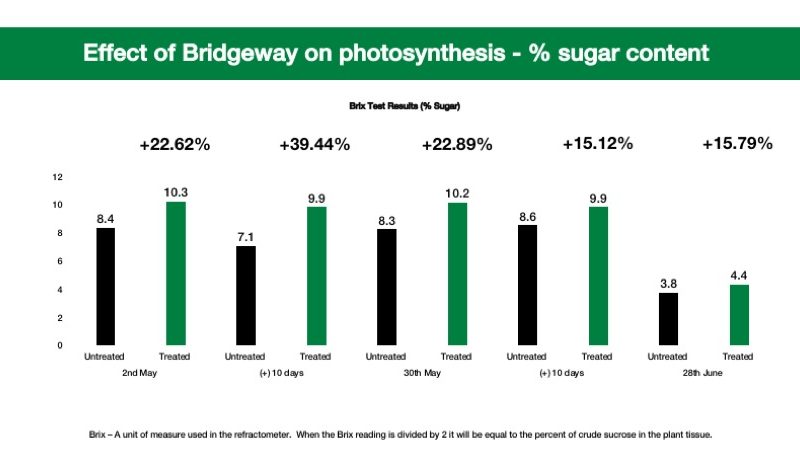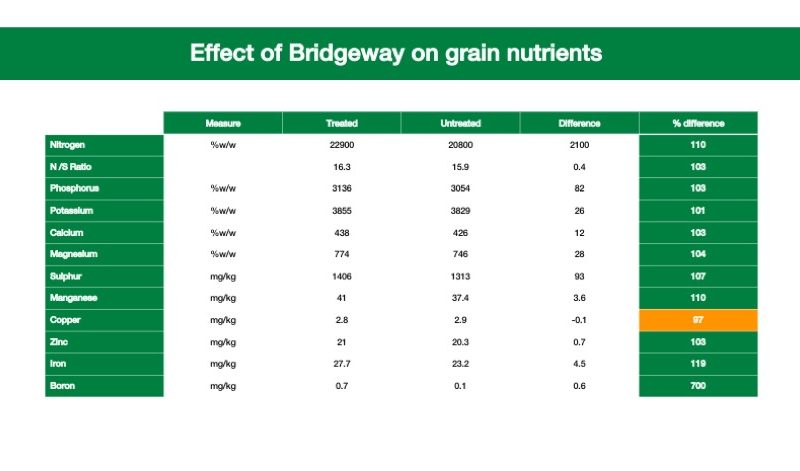Agronomist Kieran Walsh has invested a lot of time to better understand how, why and when biostimulants should or could help deliver the most benefit to the crop.
Feeding a crop biostimulants offers the opportunity to increase nitrogen-use efficiency by improving its uptake through better root growth, improving nutrient import into the plant and through physiological efficiencies such as stress tolerance and improved photosynthetic capacity. It also improves the powerhouse of the plant. If the plant has the amino acids it needs, plant health and therefore yield and quality can be optimised.
It is these potentials that has led agronomist Kieran Walsh to look at a range of biostimulants on a commercial scale to better understand when and where they can deliver the most benefit to his growers. Kieran has spent a lot of time trying to understand nutrient availability. With nutrient lock-up and drought both common stressors, he was keen to discover whether Bridgeway could help support crops and still provide an economic return to his growers.
The issue
Kieran compared treatments on high calcareous soils on a number of farms and found the most marked effects were where Bridgeway was applied to Skyfall on Cotswold Brash. Three applications were applied in the Spring, using 2.5 L/ha at T1 and T2, followed by 2.0 L/ha at T3.
Leaf tissue samples were collected throughout the growing period to look at the effect of Bridgeway on nutrient uptake and found the uptake of most macro and micro nutrients was consistently higher in the treated areas, despite the drought and heat stress this summer. Kieran also looked at plant sugar levels using a portable digital Brix refractometer.
The result
During the course of the assessments, Kieran found crops treated with Bridgeway all had increased sugars (23-39%) in their leaves at every assessment throughout May and June.
“Increased sugar levels indicate a healthy plant that’s photosynthesising well, producing the carbohydrates in the leaves and stems which will ultimately be crucial components of yield.”
In spite of the difficult season, and the fact that the last dose of late nitrogen was not applied, the Bridgeway treated crop produced a 12.8% protein milling sample (11.7% in untreated) and an increased, more consistent yield (assessed by combine yield meter). But it’s the grain analysis from treated crops that really begins to paint the picture, with increases in all the elements tested with the exception of copper.
“It makes sense that a seed with its own supply of nutrients will establish and get away quickly. So if you were keeping Bridgeway-treated grain back for seed, I’d question the need to apply any seed treatments where the seed is already in good health. Money can be better spent on ensuring the nutritional health of the crop.”
Margin over costs (MOC) of £30-35/ha were achieved from applying Bridgeway to this particular crop of Skyfall. The other crops where he put Bridgeway through its paces also showed the same trends in sugars and nutrient uptake but on average the yield increase was slightly lower, which Kieran puts down to better water availability from their chalk soils.
The treated crop had a noticeable uptake in nutrients compared to the untreated. The amino acids can help the crop use the water and nutrients that's available more efficiently, this was the big benefit where moisture was very limited last season. Bridgeway treated Skyfall ended up achieving 12.8% protein with a mean yield of 12.9 t/ha compared to the untreated areas of 11.3% protein and a mean yield of 11.0 t/ha. This was a good result in Skyfall, where proteins can cause an issue. The extra proteins were still achieved without applying a late N protein spray, which we didn't apply last season due to the very hot conditions.
Kieran Walsh, Agronomist










